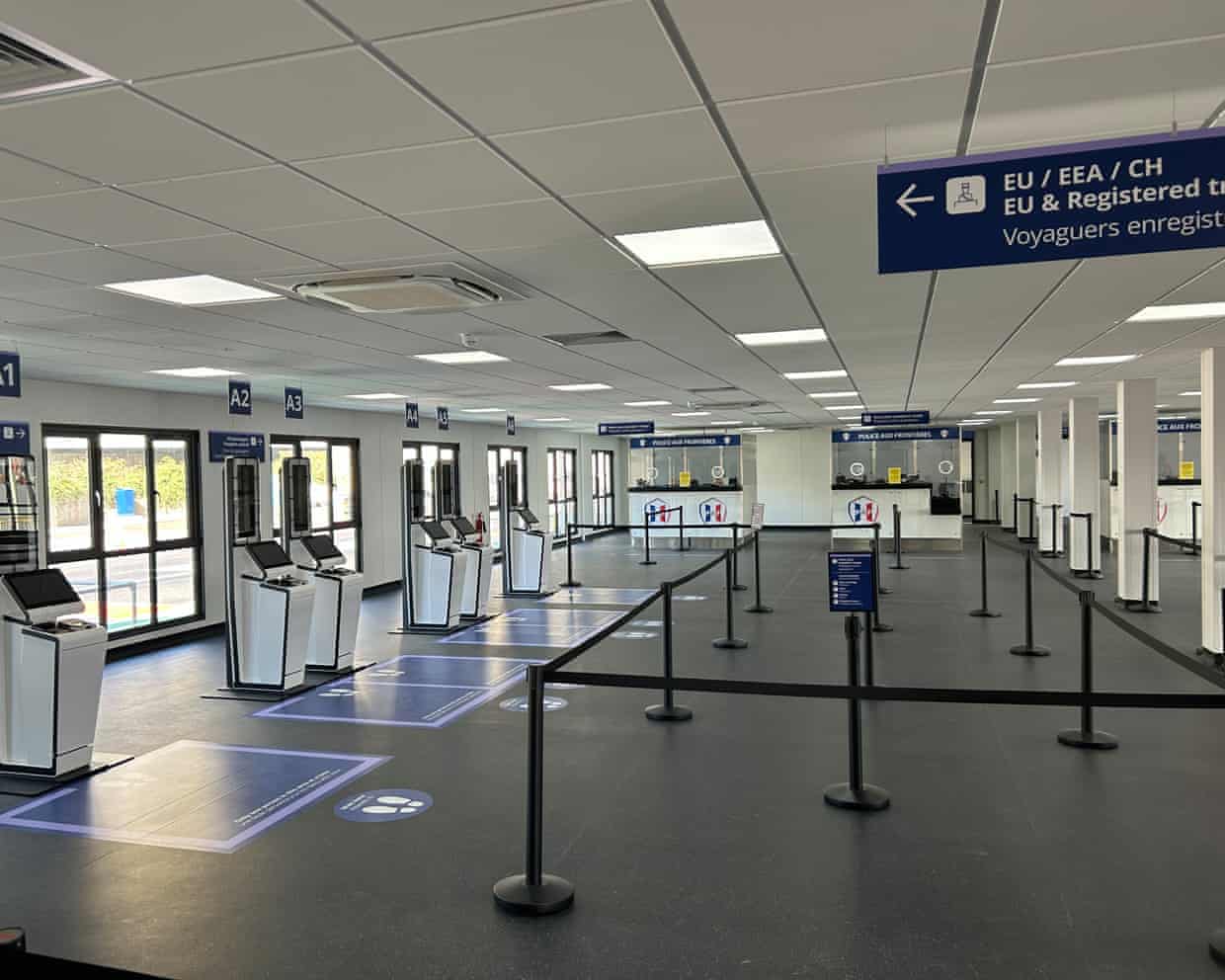Business
EU Launches Digital Entry and Exit System to Enhance Border Control

From March 26, 2024, travelers entering Europe will experience significant changes in border security with the implementation of the European Union’s new digital Entry and Exit System (EES). This initiative, which has faced multiple delays, mandates that most non-EU citizens register their biometric information upon arrival. This includes facial photographs and fingerprint scans, marking a shift from traditional passport stamping to a more efficient digital tracking system.
What is the Entry and Exit System?
The EES is not intended to replace passport control, as travelers will still encounter border officials for checks. However, the system will eliminate the need for passport stamping. Instead, countries within the Schengen area will record travelers’ biometric data, including their faces and fingerprints, along with entry and exit dates. This upgrade aims to streamline border crossings and enhance security by providing authorities with better tracking capabilities.
Scheduled to be fully operational by April 10, 2026, the EES will apply to the Schengen zone, which consists of 25 of the 27 EU member states, as well as Iceland, Liechtenstein, Norway, and Switzerland. Notably, the Republic of Ireland and Cyprus will not implement the EES, maintaining their current passport processing methods. The system primarily targets individuals who are not citizens of EU nations or the aforementioned non-EU states, though exceptions exist for those with long-stay visas.
How Will the System Operate?
Upon their first arrival at a border utilizing the EES, travelers will interact with a self-service kiosk. This machine will collect their name, passport details, fingerprints, and the dates and locations of entry and exit. It will also capture a photograph of the individual’s face. Children under the age of 12 will not be required to provide fingerprints. The initial interaction with the EES will vary depending on the mode of travel and specific entry points.
For instance, coach and foot passengers arriving at the port of Dover will begin using EES processing from March 26, while all traffic will be integrated into the system by November 2024. Coach passengers utilizing the Eurotunnel will also begin these checks on the same date. The rollout will continue across various Eurostar departure locations, starting from St Pancras International in London, with other airports introducing the system at different times. For example, Germany plans to start with a small airport in Stuttgart before expanding to larger hubs like Frankfurt.
Concerns have arisen regarding potential delays due to the new processing requirements. However, the Port of Dover has advised coach drivers to arrive no earlier than two hours before their scheduled departures. Eurostar suggests that the new procedures can be accommodated within the existing 75-minute pre-departure window. According to Yann Leriche, Chief Executive of Eurotunnel, the company is prepared for the transition and does not anticipate significant queues. Border officials are equipped with the discretion to suspend EES processing if queues become excessively long.
Data Management and Privacy
Data collected through the EES will be stored for a duration of three years, barring certain exceptions. This information can be accessed by border, visa, and immigration authorities within participating countries, as well as by local police and Europol, the EU’s law enforcement agency. The EU has indicated that under “strict conditions,” this data may be shared with countries outside of the Schengen zone or with international organizations, such as those affiliated with the United Nations.
For travelers who re-enter the Schengen area within the three-year retention period, the biometric verification process will be expedited, as their facial images and fingerprints will already be stored in the system. Individuals who decline to provide their biometric data will be denied entry, according to EU regulations.
The implementation of the EES represents a significant evolution in border security within Europe, aimed at enhancing both efficiency and safety for millions of travelers each year.
-

 Science3 months ago
Science3 months agoToyoake City Proposes Daily Two-Hour Smartphone Use Limit
-

 Health4 months ago
Health4 months agoB.C. Review Reveals Urgent Need for Rare-Disease Drug Reforms
-

 Top Stories4 months ago
Top Stories4 months agoPedestrian Fatally Injured in Esquimalt Collision on August 14
-

 Technology3 months ago
Technology3 months agoDark Adventure Game “Bye Sweet Carole” Set for October Release
-

 World3 months ago
World3 months agoJimmy Lai’s Defense Challenges Charges Under National Security Law
-

 Lifestyle4 months ago
Lifestyle4 months agoVictoria’s Pop-Up Shop Shines Light on B.C.’s Wolf Cull
-

 Technology3 months ago
Technology3 months agoKonami Revives Iconic Metal Gear Solid Delta Ahead of Release
-

 Technology3 months ago
Technology3 months agoApple Expands Self-Service Repair Program to Canada
-

 Technology3 months ago
Technology3 months agoSnapmaker U1 Color 3D Printer Redefines Speed and Sustainability
-

 Technology3 months ago
Technology3 months agoAION Folding Knife: Redefining EDC Design with Premium Materials
-

 Technology4 months ago
Technology4 months agoSolve Today’s Wordle Challenge: Hints and Answer for August 19
-

 Business4 months ago
Business4 months agoGordon Murray Automotive Unveils S1 LM and Le Mans GTR at Monterey









